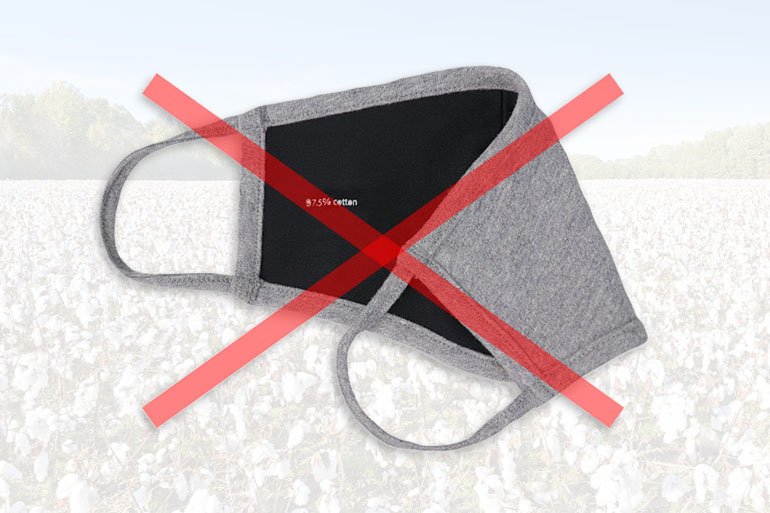Is Hemp Really The Ancient Blueprint That Never Disappeared?
Something fascinating is happening in India’s hemp industry. While most countries struggle with cannabis stigma, Indian entrepreneurs and farmers are embracing industrial hemp with remarkable ease.
The reason? They never forgot what the plant could do.
Walk through any traditional Indian market during Holi, and you’ll find vendors openly selling bhang paste. Chat with construction workers in Rajasthan, and they’ll tell you how bhang helps them feel refreshed at the end of the day and fight fatigue.
Visit any Shiva temple, and you’ll witness sadhus using cannabis in their spiritual practices. This isn’t new. This is thousands of years old.
India’s relationship with cannabis runs deeper than policy papers and market projections. It’s woven into the cultural DNA of a civilization that has been using hemp industrially and spiritually for millennia.
The Ancient Blueprint That Never Disappeared
The Atharvaveda (c. 1500–1000 BCE) mentions bhanga as one of the five sacred plants that relieve anxiety. But here’s what most people miss about ancient Indian hemp use: it was never just ceremonial.
Hemp thread was used for centuries to make garments, especially clothes, and historical records show that the first use of hemp concrete was documented in ancient India. The bhang recipe is based on ancient Vedic traditions, and is over 4000 years old.
Think about that for a moment. While Europe was still figuring out basic agriculture, India was already using hemp for textiles, construction, and medicine.
This isn’t just historical trivia. This cultural familiarity is becoming India’s secret weapon in the modern hemp industry.
Why Indian Farmers Don’t Fear Hemp
We’ve spoken with hemp farmers in Uttarakhand, and their approach is refreshingly pragmatic. They don’t see hemp as some revolutionary new crop. They see it as something their grandfathers knew how to grow.
In ancient India, hemp-infused drinks were akin to alcohol’s use in the West, and were a pivotal aspect of both religious and social occasions. This cultural comfort translates directly into business confidence.
While American and European entrepreneurs spend years educating consumers about hemp’s safety and legitimacy, Indian businesses skip that entire conversation. The market already knows.
The numbers reflect this cultural advantage. The global industrial hemp market size was evaluated at USD 6.44 billion in 2024 and is predicted to cross around USD 21.23 billion by 2034 with a CAGR of 12.67%.
India is positioning itself to capture a significant portion of this growth, and cultural acceptance is the foundation.
Jack Of All Applications
Here’s where ancient wisdom meets modern innovation. Traditional bhang preparation involved processing hemp leaves, flowers, and seeds into various forms.
If taken in proper quantity, bhang is believed to cure fever, dysentery, and sunstroke, to clear phlegm, aid in digestion, increase appetite, cure speech imperfections and lisping, and give alertness to the body. Modern hemp processors are applying similar principles to industrial applications.
Hemp seeds represent the largest segment in the market primarily attributed to their nutritional value and versatility in applications, holding around 29.9% of the market in 2024. The ancient knowledge of hemp seed processing for nutrition is directly informing today’s hemp food industry.
Traditional understanding of hemp fiber strength is driving modern textile applications. Hemp fibers are extensively used in textiles, automotive parts, bioplastics, and construction materials due to their strength and eco-friendly properties.
Indian companies are essentially scaling up traditional knowledge rather than inventing from scratch.
The Industrial Hemp Revolution Built on Ancient Foundations
What’s remarkable is how seamlessly traditional hemp knowledge is translating into cutting-edge industrial applications. Hemp can be refined and used in the manufacturing of a variety of commercial items such as pharmaceuticals, paper, textiles, biodegradable plastics, paint, insulation, biofuel, food, beverages, furniture, construction, personal care, and animal feed.
Ancient Indians used hemp for textiles, construction, medicine, and nutrition. Modern industrial hemp markets focus on textiles, construction materials, pharmaceuticals, and food products.
The applications haven’t changed much. The scale has.
Hemp fibers are used in the production of textiles, paper, and construction materials, while hempseed is used in food and beverages, dietary supplements, and cosmetics. These aren’t new discoveries. They’re ancient practices being commercialized with modern technology.
The Cultural Advantage That Money Can’t Buy
In India we are dealing with a sacramental role for cannabis ranging from ancient times to the present day. This continued use of cannabis through the millennia offers many insights into the beliefs and role of cannabis likely held in the ancient world.
This continuous cultural connection gives Indian hemp businesses something their international competitors desperately need but can’t purchase: consumer trust and acceptance. There’s no education phase, no stigma to overcome, no cultural barriers to break down.
When an Indian company launches hemp clothing, consumers don’t need convincing that hemp makes good fabric. Their ancestors wore it.
When hemp food products hit the market, buyers don’t question their safety. Bhang has been consumed for millennia.
This cultural foundation is accelerating India’s hemp industrialization in ways that market analysts are just beginning to understand.
Temple Rituals & Textile Mills
The transition from traditional to industrial hemp use is happening organically. Hemp seed oil was also used in ancient India for its spiritual value and skin health benefits.
Today’s hemp cosmetics industry is built on the same foundation. Hemp has been used for making clothes, weapons, and ship sails, among many other things, but the plant also has a long connection to ancient religion and medicine.
Modern hemp applications in automotive parts, construction materials, and pharmaceuticals are essentially extensions of these traditional uses. The continuity is striking.
Ancient hemp concrete techniques are informing modern hemp building materials. Traditional hemp textile knowledge is driving contemporary sustainable fashion. Ayurvedic hemp medicine principles are influencing modern hemp pharmaceutical development.
The Sanskrit Advantage in Global Markets
The industrial hemp market is set to grow by USD 18.31 billion from 2025 to 2029, driven by high demand from the textile industry. India’s Sanskrit hemp heritage positions it uniquely to capture this growth.
While other countries are still explaining what hemp is, India is scaling production. While international businesses debate hemp’s legitimacy, Indian companies are refining ancient processing techniques with modern equipment.
While global markets slowly accept hemp products, Indian consumers are embracing them as familiar innovations. This cultural head start is translating into competitive advantages that purely technical or financial approaches can’t match.
India isn’t simply entering the hemp market. It’s coming home to a plant it never really left.
Sources
- The Trost. “Exploring the Traditional Uses of Hemp in India.” November 13, 2024. Retrieved from https://thetrost.com/blogs/blogs/exploring-the-traditional-uses-of-hemp-in-india
- Wikipedia. “Bhang.” Retrieved from https://en.wikipedia.org/wiki/Bhang
- Wikipedia. “Cannabis in India.” Retrieved from https://en.wikipedia.org/wiki/Cannabis_in_India
- Hemp Shopper. “1000 BCE: Bhang is first used in India – Hemp History.” May 17, 2021. Retrieved from https://hempshopper.com/hemp-history/1000-bce-bhang-is-first-used-in-hindu-rites-in-india/
- Cannabis Culture. “The Ganja Culture of India.” January 20, 2020. Retrieved from https://www.cannabisculture.com/content/2019/12/09/the-ganja-culture-of-india/
- India Hemp Organics. “The history and evolution of hemp cultivation.” September 27, 2023. Retrieved from https://indiahemporganics.com/blogs/general-blog/the-history-and-evolution-of-hemp-cultivation
- Cancheck. “Cannabis Use in the Ancient World: Ancient India.” December 23, 2020. Retrieved from https://cancheck.com/cannabis-use-in-the-ancient-world-ancient-india/
- Mountain Smokes. “History and Cultural Significance of Hemp.” April 10, 2022. Retrieved from https://mountainsmokes.com/history-and-cultural-significance-of-hemp/
- Hempyar. “Hemp in Ancient India – usage, representation, and accessibility.” September 6, 2022. Retrieved from https://hempyar.com/blogs/blog/hemp-in-ancient-india-usage-representation-and-accessibility
- Psychology Today. “History of Cannabis in India.” June 16, 2011. Retrieved from https://www.psychologytoday.com/us/blog/the-teenage-mind/201106/history-cannabis-in-india
- Markets and Markets. “Industrial Hemp Market: Trends, Opportunities, Challenges.” Retrieved from https://www.marketsandmarkets.com/Market-Reports/industrial-hemp-market-84188417.html
- Business Wire. “Industrial Hemp Strategic Industry Research Report 2024.” November 12, 2024. Retrieved from https://www.businesswire.com/news/home/20241112686175/en/
- Precedence Research. “Industrial Hemp Market Size to Cross USD 21.23 Bn by 2034.” Retrieved from https://www.precedenceresearch.com/industrial-hemp-market
- PR Newswire. “Industrial Hemp Market, 39% of Growth to Originate from APAC.” December 18, 2024. Retrieved from https://www.prnewswire.com/news-releases/industrial-hemp-market–39-of-growth-to-originate-from-apac-technavio-302334614.html
- Sathguru. “Industrial Hemp: An emerging opportunity for India?” February 22, 2023. Retrieved from https://blog.sathguru.com/agribusiness/industrial-hemp-an-emerging-opportunity-for-india/
- IMARC Group. “Industrial Hemp Market Size, Share & Analysis Report 2033.” Retrieved from https://www.imarcgroup.com/industrial-hemp-market
- Nomomente. “Hemp in India – History, Legalities and New Horizons.” November 27, 2021. Retrieved from https://www.nomomente.org/post/hemp-in-india
- PR Newswire. “Industrial Hemp Market to Grow by USD 18.31 Billion from 2025-2029.” February 13, 2025. Retrieved from https://www.prnewswire.com/news-releases/industrial-hemp-market-to-grow-by-usd-18-31-billion-from-2025-2029–driven-by-high-demand-from-the-textile-industry-report-on-how-ai-is-driving-market-transformation–technavio-302374470.html





